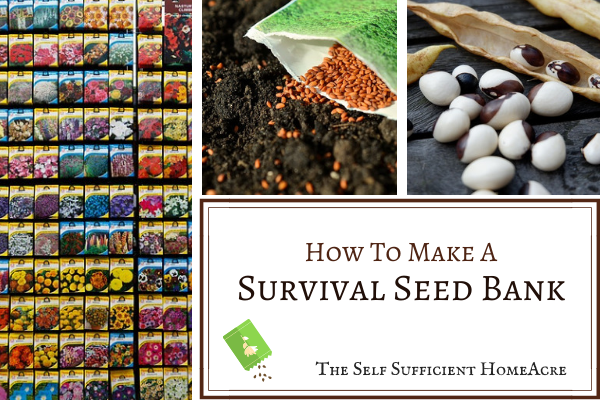
How to Make A Survival Seed Bank
A survival seed bank is a collection of seeds stored in a protective container as a survival aid in the event of a long-term emergency. It’s a great way to prepare for an event that makes home food production necessary for the survival of your family. Whether you are a prepper or you just want to keep enough seeds on hand to plant your garden in spring, it’s a great idea to store your seeds properly to prevent a decline in germination rate. This saves money and helps safeguard against food insecurity.
This post contains affiliate links or advertisements as a means for this website to earn income. As an Amazon, LLC affiliate, I earn a commission on qualified purchases made through these links.
Survival seed banks, or collections, are readily available online. Purchasing a survival seed bank is a nice option if your time is limited and you just want the peace of mind that comes with a quick order. They usually have a good selection of vegetables, herbs, melons, and other annual fruits. These seed banks should come already sealed for long-term storage but they might not be resealable. So if you open them, you’ll want to use my instructions, below, for keeping any leftover seeds for longer periods.
Survival Seed Bank Basics
You can start a survival seed bank to save money, customize it to your needs, and save the varieties that do well with your growing conditions.
The basic instructions are: place a selection of heirloom seeds in an airtight container and store it in a cool, dry place. But some extra steps will make this process go a lot more smoothly!
Choose Your Seeds Wisely And Store Them Properly
Order heirloom seed varieties from a reliable company, such as Mary’s Heirloom Seeds. They sell only open-pollinated varieties that may be saved from seed each year and still produce the same variety.
Hybrid varieties are the result of two or more varieties bred for certain characteristics. The seeds collected from hybrids at the end of the season may produce an edible crop, but results will vary. Stick with heirlooms for your survival seed bank. Be sure that your seeds are not genetically modified or genetically engineered because they won’t produce the same quality of plant when saved from seed at the end of the season.
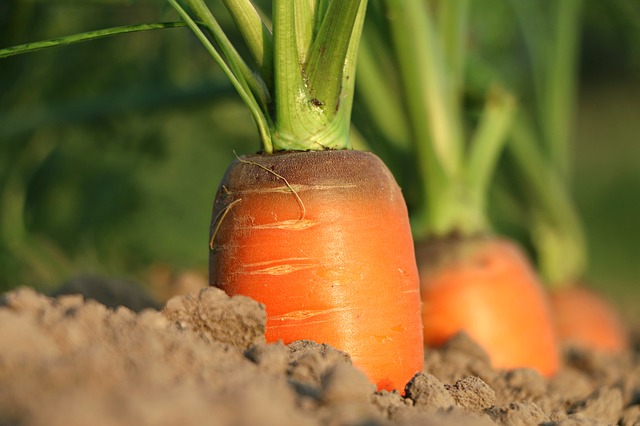
Best and Worst Seeds for Long-Term Storage
Seeds that don’t store well for long periods and are best used within a year or two of purchase or saving:
- Carrots
- Parsnips
- Leeks
- Onions
Seeds that keep well for several years and may be stored with good germination rates:
- Winter squash
- Pumpkins
- Green beans
- Peas
- Wheat
- Oats
Store Seeds in an Airtight Container
The container you use for your survival seed bank depends somewhat on your budget and needs. If you’ll use the seeds each year, a mason jar with an airtight lid will work just fine.
If you are planning a ‘bug out bag’ and won’t be planting the seeds each year use a plastic freezer bag, a vacuum sealer bag (vacuum seal for best results), or a mylar bag. The mylar bag is the best option for long-term storage. There are also a variety of convenient seed storage boxes that work well for shorter storage solutions.

Add Oxygen Absorbers & Silica Gel Packets
Using oxygen absorbers and silica gel packets in your storage containers increases the storage life of seeds. Seeds store best in low oxygen, low humidity, and low-temperature environments.
Oxygen absorbers help remove oxygen from the container for a year, possibly longer. Once you open the container, it is a good idea to replace them with new oxygen absorbers.
Silica gel packets absorb moisture, preventing humidity from building up inside your storage container.
Used together with refrigeration or freezing, these products help increase the storage life of your survival seed bank.
Start by ordering, storing, and using your survival seed bank properly:
- Order heirloom seeds for vegetables, herbs, and fruits that you enjoy
- Keep seeds dry and out of sunlight
- Place packets of seeds in an airtight container
- Add an oxygen-absorbing packet and/or silica gel packet to increase storage life
- Close the container tightly to prevent moisture from seeping in
- Place the survival seed bank in a cool, dark place (refrigerator or freezer is best)
- Do not remove the container from cold storage and open it right away, see the instructions below

When you are ready to use your survival seed bank, follow these instructions:
- Remove the survival seed bank from the refrigerator or freezer
- Set the container on a counter out of direct sunlight, until the contents of the jar have reached room temperature
- Open the container and remove only the seeds that you will be using
- Place a new oxygen-absorbing packet and/or silica gel packet in the container if possible
- Close the container tightly and return it to cold storage
If you remove the container from cold storage and open it right away, condensation may form on the seeds. The moisture can initiate germination, which is bad. So allow the entire container and contents to warm up to room temperature, then remove only the seeds you will be using.

Using Your Survival Seed Bank
Even under ideal storage conditions, seeds will deteriorate in quality over time. The best solution is to store seeds for shorter periods and use some each year. Growing a garden regularly provides healthy food, substantial savings, and valuable practice for emergency preparedness and long-term survival.
Hopefully, we will never need these skills, but having them is great for everyday self-reliance. And if you use half of the seeds from your survival seed bank (saving half in case of crop failure), replenish them as needed, and keep your gardening skills honed, you will get the best results when it matters.
Testing Germination Rates
It is a good idea to test your germination rates each year before you place a new seed order. Here’s how:
- Place 10 seeds on a damp (not soaking wet) paper towel
- Fold the damp paper towel over and place it in a plastic baggie
- Mark the date, variety, time to germination, and age of the seed on the baggie
- Place in a warm spot, a germinating mat works well
- Open the baggie each day to check for germination and replenish moisture if needed
- If seeds do not sprout within their required germination time, give them a few more days
- Seeds that do not germinate are most likely not viable
- Check temperature, moisture, and other conditions for problems with germination
- If 10 out of 10 seeds germinate, you have a 100% germination rate (every seed that germinates represents 10% of your total)
- Varieties that have less than a 50% germination rate should be replaced

Do You Need an Emergency Seed Bank?
But what if you don’t have anywhere to plant a garden? You may want to check for a community garden in your area, plant in pots, or read up on gardening skills if you really can’t put in a small garden now.
If you are putting together a survival seed bank for your emergency preparedness plans, but can’t use it right away, follow the directions for storage above, using the mylar bag option with a silica gel packet and an oxygen absorber.
If possible, put together a new survival seed bank every three to five years to ensure better germination rates. Donate the old seeds to someone who can use them.
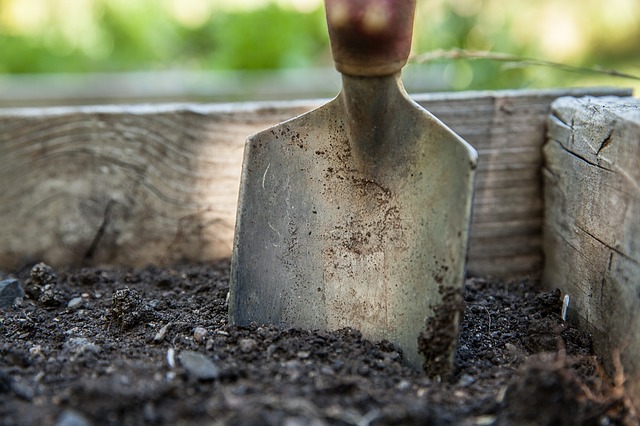
Are You Already A Gardener?
For those who have mad gardening skills, the survival seed bank tips we’ve shared might seem pretty basic. Increase your gardening and survival skills with some of these ideas:
- Start saving heirloom seeds each year
- Try growing new vegetables and varieties
- Plant fruit and nut trees to expand your harvest
- Raise a small plot of grain for grinding flour
- Keep chickens for eggs (and possibly meat)
- Learn to forage for food
Are you interested in reading other articles about self-reliance? Learn how to be more self-sufficient and grow the best vegetable garden for your needs.
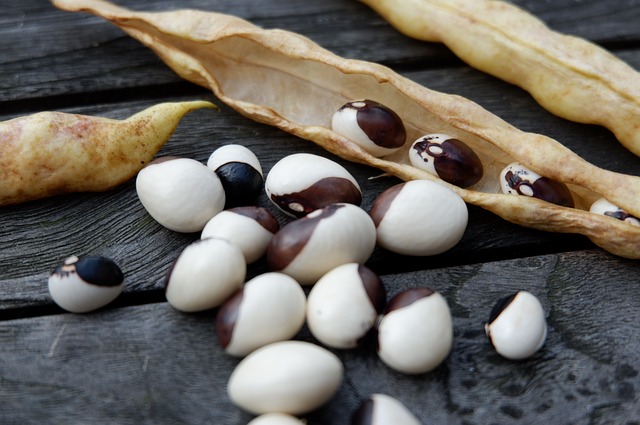
Using Your Survival Seed Bank
Here are the basic tips for making the most of your survival seed bank by collecting, saving, and using the best seeds for your needs…
- Grow and save heirloom seeds
- Keep a ‘nursery plot’ for growing biennial crops to collect seeds in the second year
- Save the best seeds from your garden each year
- Grow a variety of different crops to provide a safety net
- Test saved seeds for germination rates each year
- Swap out old seeds for new seeds when germination rates are poor
- Use half of the saved seeds and store the other half as a safety measure
- Provide ideal conditions for seed storage according to your needs
Check out a good book on saving heirloom seeds if you aren’t sure how to get started. Before you know it, you’ll be an old pro at growing a garden and saving your heirloom seeds each year. Remember that knowledge is important, but practice makes perfect!
Do you save heirloom seeds for your garden? Share your tips in the comments!
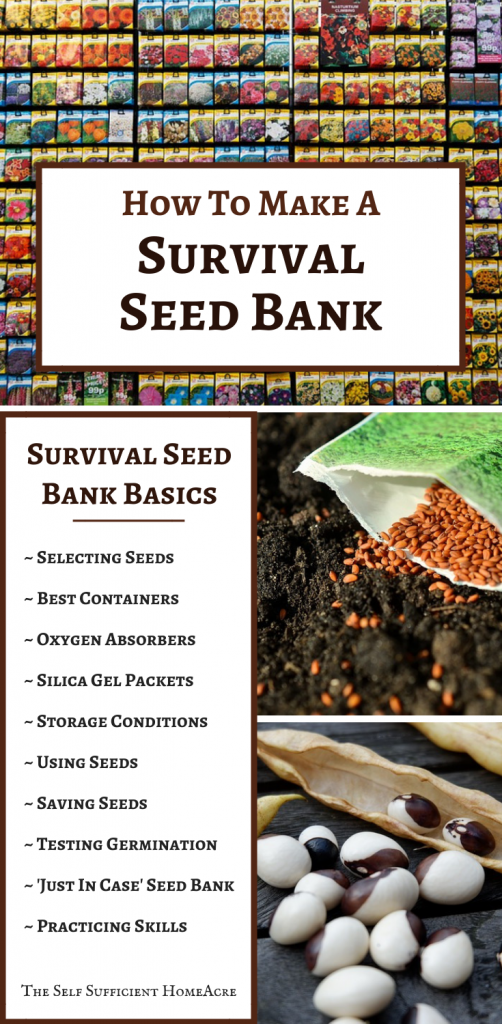



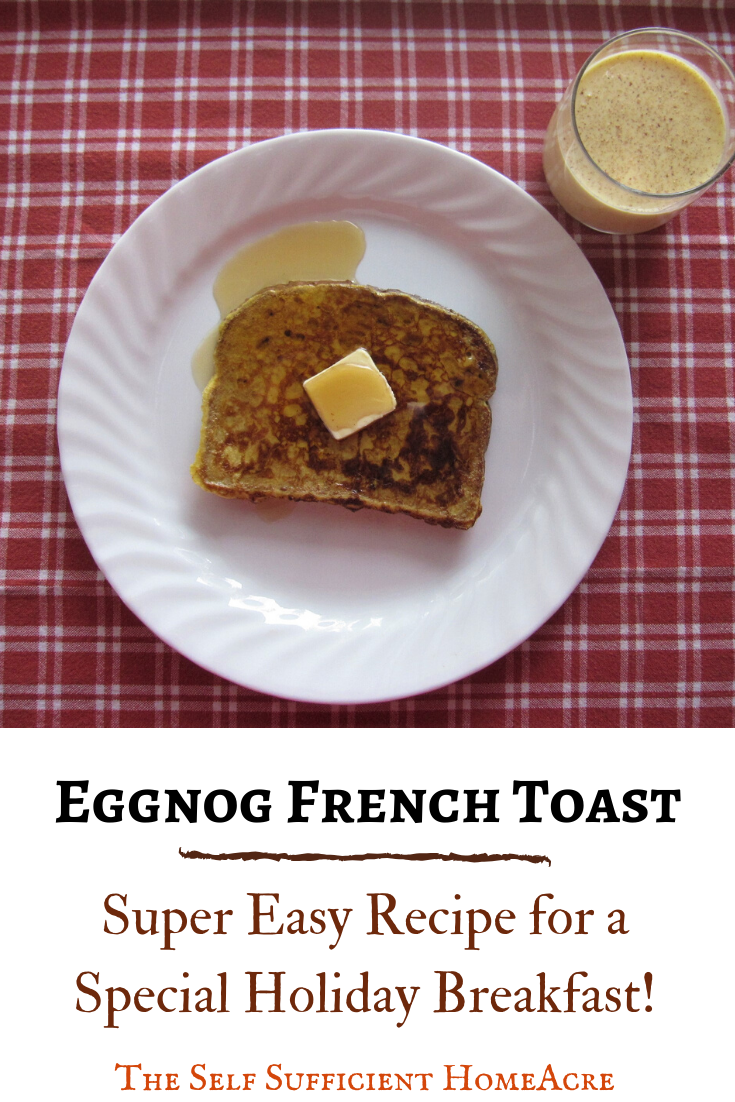
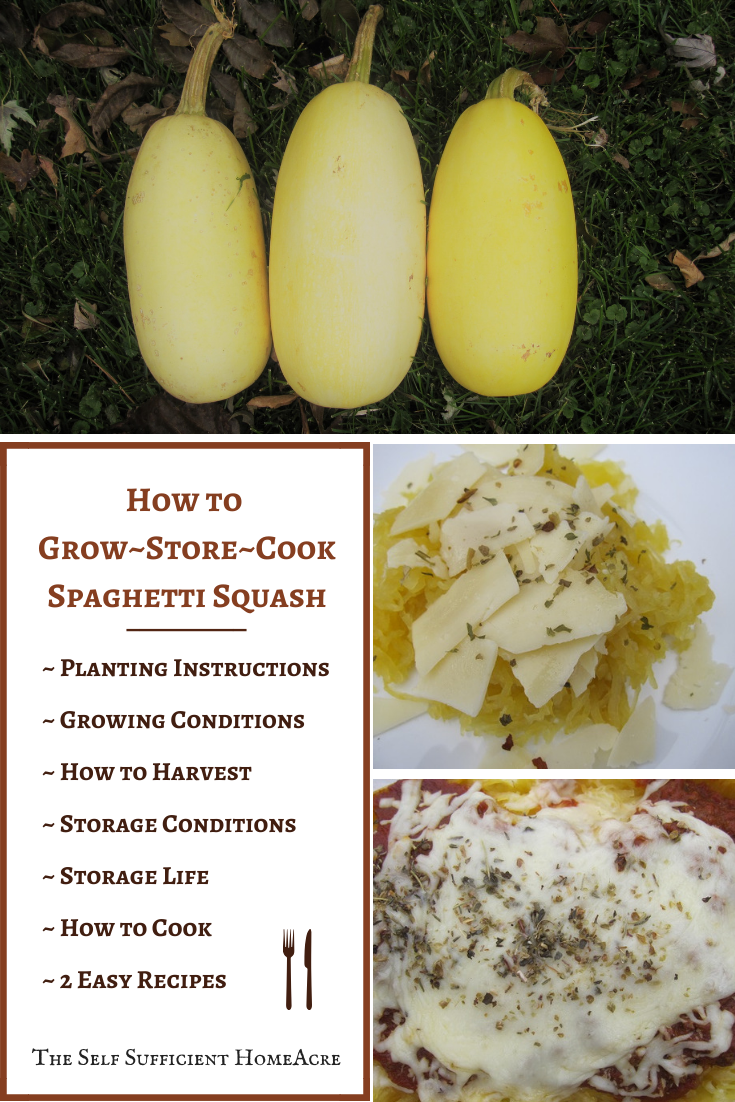
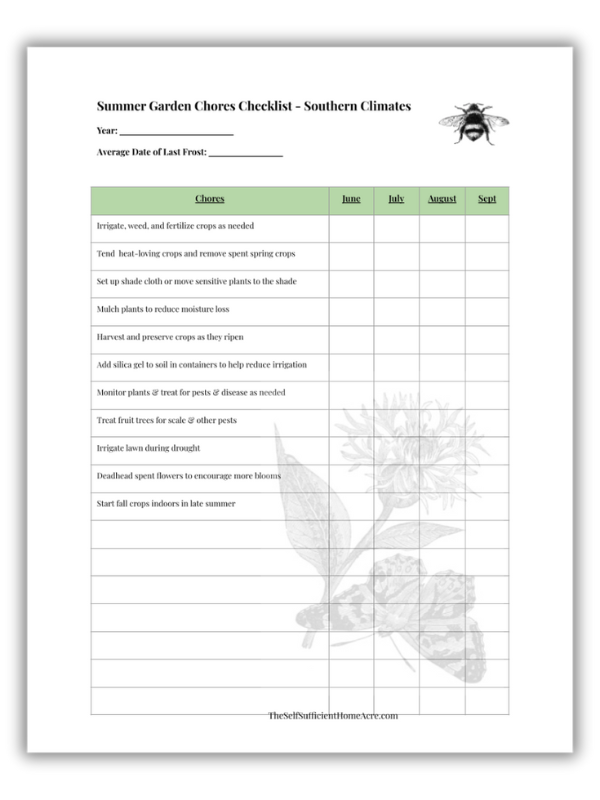

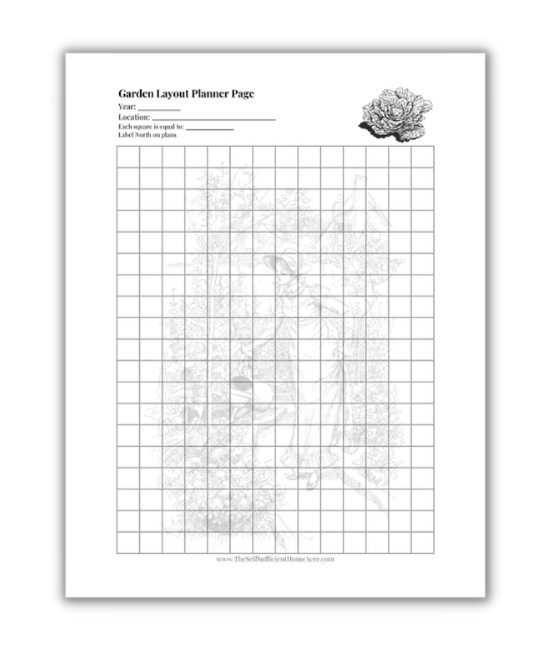

Hello…thank you for taking questions ;D
I have read here on your site and others that for saving seeds if you freeze them it helps in long-term storage. But, isn’t the point to keep it from any form of moisture? Freezing creates moisture. This is also recommended for long term flour storage as well. I have the same question for this situation as well.
Look forward to your insight…
Margeaux Holland
Hi:
Hope you can answer but the info I have gathered suggests that when mylar bags are used, oxygen absorbers require moisture to activate so not really sure if oxygen absorbers and moisture absorbers can both be used?
Thanks
Hi Robert,
There is more than one kind of oxygen absorber and some require moisture to activate, while others do not. I recommend reading up on the brand you purchase to find out what the manufacturer recommends before purchasing and using them. When I wrote this post, I did not realize that there are some oxygen absorbers that actually require moisture to work properly… who knew?! (Now I know! Thanks for stopping by!)
Also, since I’m diabetic, and carbs are out I have decided to plant lots of radishes. They are, I have read, great for replacing potatoes in recipes like potato salad. When cooked, radishes make a very similar tasting substitute for potatoes. So for potato salad, au gratin, etc., they would be good substitutes. I never cared for raw radishes, but tried them out and they are quite similar tasting, not exact, but comparable.
I’m pre-diabetic and this sounds like a great idea… thanks for sharing!
This is a great post. My grandparents as well as my husbands grandparents were avid gardeners. One even had an organic nursery. (I’m 68) my parents were NOT food gardeners. They loved landscaping, but did not grow ANY food for themselves. Hence, I did not learn at all. For almost 40 years, I had an extremely difficult job, which I just retired from, and am now able to have the time to garden. It is scary for me…..I dabbled a bit when a lot younger, but the time involved was just too much for my very physical job.
I can use all the help I can get….but look forward to trying it out.
Which brings me to my first question: when a blogger says: nitrogen, or phosphorous, or other soil amendments, it would be nice if they also posted HOW to get it other than buying a garden amendment…for times when fertilizers are not available ( read: covid shortages)
As I haven’t planned my garden area yet, I’ll start with using grow bags and containers for a few items I use all the time.
Thanks for the post!
Hi Carol,
Thanks so much! It can be intimidating to try growing a veggie garden but I’m sure that you will do great. And I completely understand your reasons for wanting to know what natural things you can use to amend the soil instead of buying fertilizer. The best way to add nutrients is to compost your kitchen and yard waste (and manure if you have it)… this feeds the microorganisms that help your plants grow. Nitrogen may be added with decomposing coffee grounds. Phosphorus may be supplied with crab and shrimp shells (if you like seafood) or with composted manure. Banana peels are a great source of potassium. There are ways to increase fertility without buying fertilizer! (Hmmm… seems like a great idea for a post!)
This is what I featured on my blog 12-7 to 12-11-2020. On Tuesday was Christmas Tree Pizza Pull Apart. Wednesday saw Sugar Plum Fairy Iced Cookies. Thursday was Red Velvet Iced Cookies. And winding up Christmas specials was Gluten Free Ranch Dip. Enjoy!
I like working in the garden with my granddaughters and teaching them all the things that my nanny taught me when I was little.
Wow! I’m a horrible gardener who keeps trying and I made several mistakes with my survival seeds packet already! I did plant the lettuce and it’s sprouting up well already tho!
I’m pretty sure I read recently that heirloom plants have a greater nutritional content than modern hybrids, which makes them even more appealing and valuable for my family. Thank you for running this giveaway!
Thank you. This article is very helpful. I will have to think about how to implement it myself.
With heirloom seeds I have no concern about lab interference. Thanks for this opportunity to receive more seeds.
Great giveaway and I learned a lot about saving seeds! I don’t think i have been doing it right!
I love the history behind heirloom plants/seeds, and I love that they taste better than modern, hybrid, commercial varieties. Our ancestors knew what they were doing, and if they were going to put in the work, by golly they were going to get good-tasting food out of it!. 🙂
I save the silica packets out of every vitamin container I get. I have almost a half gallon bag of them. They’re perfect for adding to things like brown sugar and I’ll certainly add a handful to my seed storage bin. Thank you
I love that you can save seeds from heirloom varieties to plant the next year.
Very new to all things gardening. Hope to do a couple of containers in the spring with herbs to start with, and then see how it goes from there.
TANX! for the info. Especially about saving your own seeds. I just started gardening last year after a multi-decade pause. Am finding it inspiring, calming, and entertaining!
I am an amateur, coming from a family where my grandparents lived off the land! I want this knowledge for my own sake, as well as for my children and their families! Thank you for the opportunity to win such generous gifts!
Thank you for sharing and your desire to educate. 🙂
New to seed saving. Thank you for the tips on how to do it.
I love the connection heirloom seeds give me to the past. It just feels satisfying to know that I’m growing and eating varieties that have been enjoyed by generations before me.
Since buying a farmhouse in Lower Normandy, France and experiencing several lockdowns, the self sufficiency life has been calling me! I adore growing my own fruit, veg & herbs knowing that they’re all organic & chemical, plastic, GMO free. What a difference it makes to ones health and wellbeing very generous of you to gift such a wonderful gift that’ll just keep on giving
Thanks for the giveaway! You have a lot of information on your blog. Thank you for the time you take to put all this info out there for others.
I’m happy to share, Darlene! Thanks so much for stopping by to visit!
I would love to win this and add gardening to my kids homeschool curriculum. It’s time they learn to take care of themselves!
I like the idea of preserving heirloom plants and especially like the ability to save seeds from year to year.
I love gardening and try to save as many seeds as I can. I like trying to vegetables, but sometimes they don’t work out. I won’t be growing 2 veggies I tried this year. Just wasn’t what I expected.
Hi!
Do you ever run across an heirloom tomato known as Virginia Sweet?
Thanks,
Ronnie
Hi Lisa!
Thank you for the great tips on seed saving. I have some packs of seeds that are 3 years old, and some germinated this year, and some did not! I was never really educated on how long to keep seed packets for, so I was never able to use them up in time.
But now I have a better understanding, thanks to you ma’am!
Thank you for sharing this post with us on the Homestead Blog Hop!
-Cherelle
I’m happy to share, Cherelle! Thanks for stopping by!
I just like the flavor of heirloom plants.
Looking forward to reviewing seed catelog!
I just found a ton of old (read: ancient) seed packets from the 1970s. Did I pitch ’em? Nope, used them with kids to learn about germination, rates, fractions, etc.
I feel like a kid in a candy store when it comes to new seed varieties! I think I’d like to try the Tennessee Sweet Potato Squash since sweet potatoes don’t grow well where I live.
I want to be able to save seeds and keep the seed lines going!
Looking for Heirloom seeds for clay & clay amended soil – any thoughts?
Hi Maz,
I suggest avoiding carrots or other root crops for heavy clay soil. I have clay soil and most of my crops do well, but the root crops don’t do as well until I’ve worked a lot of well-rotted compost in for several years. Plant nitrogen hungry crops (squash, corn, peppers, etc) after adding the compost.
Thank you, Lisa – I didn’t think about the nitrogen. I just started a ‘hole’ to create a micro-soil bed. I dug out clay and mixed in a lot of compost. I plan on putting a bottomless bucket over that to try some root crops for next year.
I would like to try the Worchester Indian red pole lime bean
I like the Oaxacan Green Corn.
I grow open-pollinated heirloom seeds to promote continued diversity among our food crops. Looking at the new arrivals, I’m most excited about the Worchester Indian Red Pole Lima Bean – those look neat.
I would like to try Candy Roaster.
I would like to try Black Diamond Watermelon.
The information is great! I am not a very good gardener but I have always believed in the need to maintain biodiversity, thus the importance of heirloom seeds!
I grow heirloom to save seeds and preserve these types of seed. I grow Mary’s because they have great germination rates.
I grow heirloom seeds so I can save them from year to year without worry. Honestly, they just taste better
I grow heirlooms so I can save the seed for the next growing season.
I’d like to try the elephant garlic. I’ve ordered lots of seeds from Mary this year and love them!!! Thanks for the discount code!
Thank you for the valuable information! I would love to try to grow watermelon or the Japanese tomato variety thats new for next year.
We have ordered heirloom seeds since starting our seed bank back in 2011. There are a few hybrids we like so we make sure we have plenty of seed to grow what we want. Everything else is heirloom.
We use our food saver to seal up the seeds and we have a refrigerator at our barn dedicated to keeping our seed bank.
Something I would like to try would be some of the Japanese cucumbers that grow long and don’t have large seeds.
This is an excellent, thorough article. Thanks for sharing your knowledge!
Melissa | Little Frugal Homestead
Thank you, Melissa! And thank you for sharing your knowledge with us!. I haven’t tried the vacuum seal method. I’d like to get some of the special lids so I can vacuum seal the jars. 🙂
Seeds require SOME moisture to remain viable. If you use a food saver to remove all oxygen you also remove moisture, and will make the seeds less viable. So, don’t vacuum seal seeds.
Hi Carol,
I would need to double-check this but I don’t think that vacuum sealing removes all of the oxygen unless you put an oxygen absorber in the container. Maybe if you are using a vacuum-sealed bag it would be a bigger issue.
I love Mary’s! I started choosing heirloom so that I could save seeds from year to year.
I buy a lot of my seed stock from Mary’s. I can’t wait to start planting! I hope to get garlic soon for fall planting.
Heirloom seeds may look weired but they taste better
I believe the heirloom seeds will produce better & the vegs. will taste better. I love using seeds that generations have used before me. We planted the dragon bean seeds from Mary;s Seeds and they were absolutely amazing & so good. Stay safe and keep gardening it will pay dividends.
I would like to try heirloom tomatoes, squash, and carrots. I like conserving seeds for the future.
I am a beginner gardener and have learn that I can only save seeds from heirloom plants. So I gave away my hybrid seeds and started sowing heirloom seeds. I have already saved some green bean seeds (Contender) for next year. I have learned a lot from your website. Thank you 🙂
My friend and I plan our gardens so we each plant particular green beans, squash, etc so there is little chance of accidental hybridization. Had worked well for us! Seed saving is a must for us!
I like planting heirlooms because I’ll be able to save seeds from the ones I like, and because I’m a history nut…I like the idea of growing and eating foods that generation upon generation before me have grown and eaten. I’ve also heard many times that heirlooms taste better, and it’s absolutely true for beans!
I’d like to try the Alaska Pea. The varieties of peas I planted this year didn’t do very well, and the few we got didn’t have a great flavor.
Because they haven’t been genetically modified and are better for us and we can save the seeds from year to year.
Because they’re organic and taste better! 🙂
Heirloom veggies taste much better than commercially grown varieties!
I had an Airbnb host in Poland who said her dad was an esteemed plant geneticist during the Cold war and companies from the West used to come and visit him. She said commercial plant genes are manipulated so the seeds can’t be grown year after year, that after a set number of growings from the original seeds you used they just stop because a finite repetition is bred into them. For that reason alone the only seeds worth saving for survival purposes are organic ones that haven’t been interfered with.
Hi Kelly,
Interesting. I try to grow mostly heirloom seeds, which aren’t necessarily organic, but they are saved from year to year and germinate as they should.